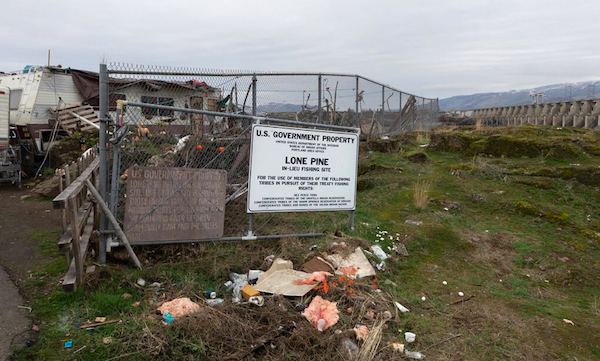forum
library
tutorial
contact

As the Columbia Rolls On, History Records
Waves of Losses Along its Banks
by Lynda Mapes
Seattle Times, February 28, 2021
|
the film forum library tutorial contact |

|
As the Columbia Rolls On, History Records
by Lynda Mapes
|
 In some places in Washington, history speaks louder than in others.
In some places in Washington, history speaks louder than in others.
I've felt that way in the State Archives, holding the letter from Thomas Aldwell to the fisheries commissioner for the state of Washington that sealed the fate of the Elwha River. The two decided it was OK that Aldwell had built the Elwha Dam without a fish ladder, a deal that was illegal even when the letter was written in 1913. It was glossed over by letting Aldwell's dam be an impoundment for the state's fish hatchery -- which failed not long thereafter.
So it goes on the region's great rivers, where generations of salmon, and people, are affected by decisions made generations before us. Perhaps in few places is this more true than on the Columbia River. Here, on the great river of the West, an empire of hydropower dams was built, transforming the region and the river in just a few decades, beginning with Bonneville Dam in the 1930s.
But this decision that helped enrich the region's newcomers displaced the first peoples of this place, and destroyed the natural wealth of salmon that had sustained them for some 10,000 years.
Today, along the river downstream of The Dalles Dam in the mid-Columbia, there is a fishing site built by the Corps of Engineers. It is intended to replace some of the fishing sites lost when one of the greatest Indigenous fisheries the world has ever known, at Celilo Falls, was drowned beneath The Dalles Dam. The year was 1957.
The so-called Lone Pine In-Lieu Fishing Site is a sad replacement, one of 31 such sites on both sides of the river reserved for the use of four tribes with treaty-reserved fishing rights along the Columbia.
I visited Lone Pine, and other In-Lieu and Treaty Fishing Access Sites along both sides of the Columbia, last December with photographer Andy Bao. We wanted to document what happens when a nation doesn't keep its promises. The effects of commitments made by the federal government to replace homes lost when the Bonneville and The Dalles dams were built that were never kept.
Today, fishing sites like Lone Pine are being used by Indian families who lack housing, who still want to be by the river, where their cultural heritage lies. Never designed as permanent residence for the hundreds of people living there, the fishing sites have become unsafe -- particularly during the COVID pandemic. And the replacement houses still haven't been built.
This week's cover story is about the power and pull of the Columbia, the displacement of the first people of this place and the ways in which the river has been transformed by the region's newcomers. It is about obligations still unmet to replace what they lost. Nothing ever can, of course. But a roof overhead and a decent place to fish are a start.
Related Pages:
As the Columbia Rolls On, History Records Waves of Losses Along its Banks by Neita Cecil, The Dalles Chronicle, 1/9/18
Trump Administration Should Reverse Disgraceful Tribal Housing Decision by Editorial Board, The Oregonian, 11/5/17
Tribal Housing Efforts Looming by Neita Cecil, The Dalles Chronicle, 10/24/17
Tribal Housing Replacement Funded by Jesse Burkhardt, The Dalles Chronicle, 2/24/17
learn more on topics covered in the film
see the video
read the script
learn the songs
discussion forum
